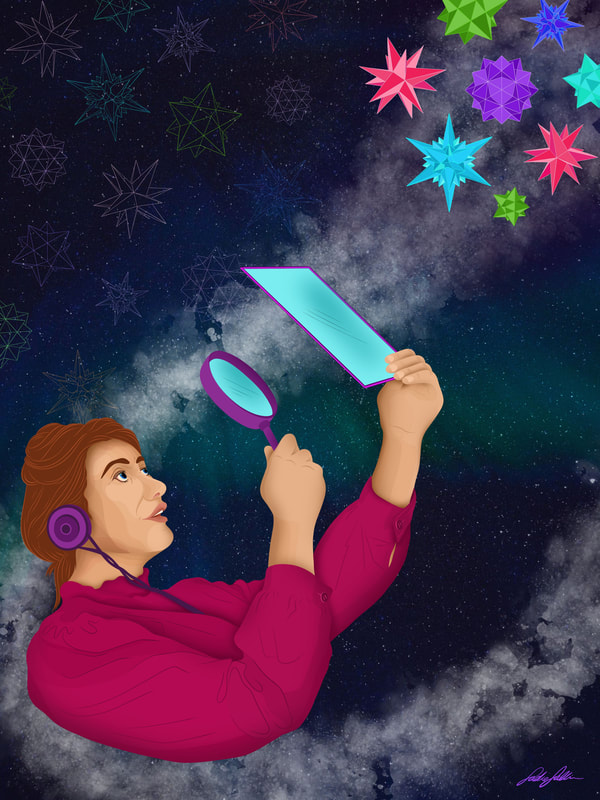|
Henrietta Swan Leavitt (1868-1921)
Lancaster, Massachusetts, USA Digital Illustration, 24" x 32", 2022 Did you ever wonder why some stars twinkle and why some are dull? Henrietta Swan Leavitt was an astronomer and was known for her discovery of the relationship between period and luminosity in Cepheid variables, pulsating stars that vary regularly in brightness. Her work would later help astronomers discover the first “standard candle” with which to measure the distance to faraway galaxies.
Working as one of the first woman “computers” at Harvard University, Leavitt cataloged the brightness of stars as they appeared in the observatory’s photographic plates. During this time, women were not allowed to handle telescopes but could work with the scientific data that was photographed. Leavitt never completed her degree from Harvard but continued her computing work for the university. Severely underpaid and suffering from hearing loss, Leavitt identified variable stars noticing that some were brighter for longer periods of time. She found a scale factor in distance for Cepheid stars leading to a logarithm of a star’s average luminosity (“Leavitt’s law”) which led to a measure of a star’s luminosity. Before Leavitt, astronomers could only measure hundreds of light years, however, her discovery refined the distance significantly. This work eventually contributed to significant discoveries; the Milky Way, the Andromeda Galaxy, spiral nebulae, and universal expansion – Hubble’s Law. Leavitt never won a Nobel Prize for her work but many astronomers, including Edwin Hubble, believe she deserved one. She eventually passed away at age 53 from stomach cancer, but many say she will go down in history as one of the most lovable, joyful, and appreciated astronomers to have lived. Asteroid 5383 Leavitt was named after her in honor of deaf men and woman astronomers. |
Proudly powered by Weebly
